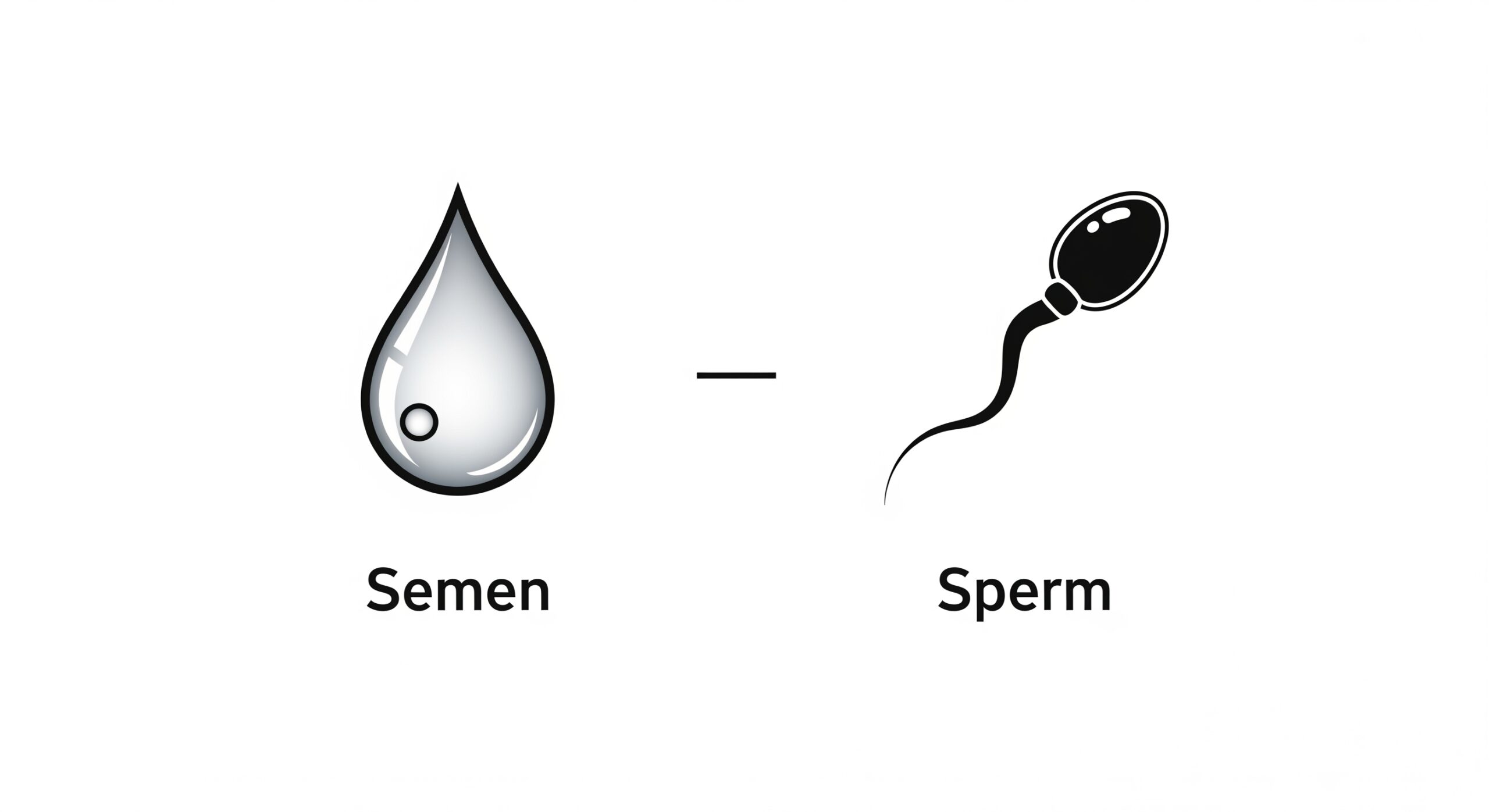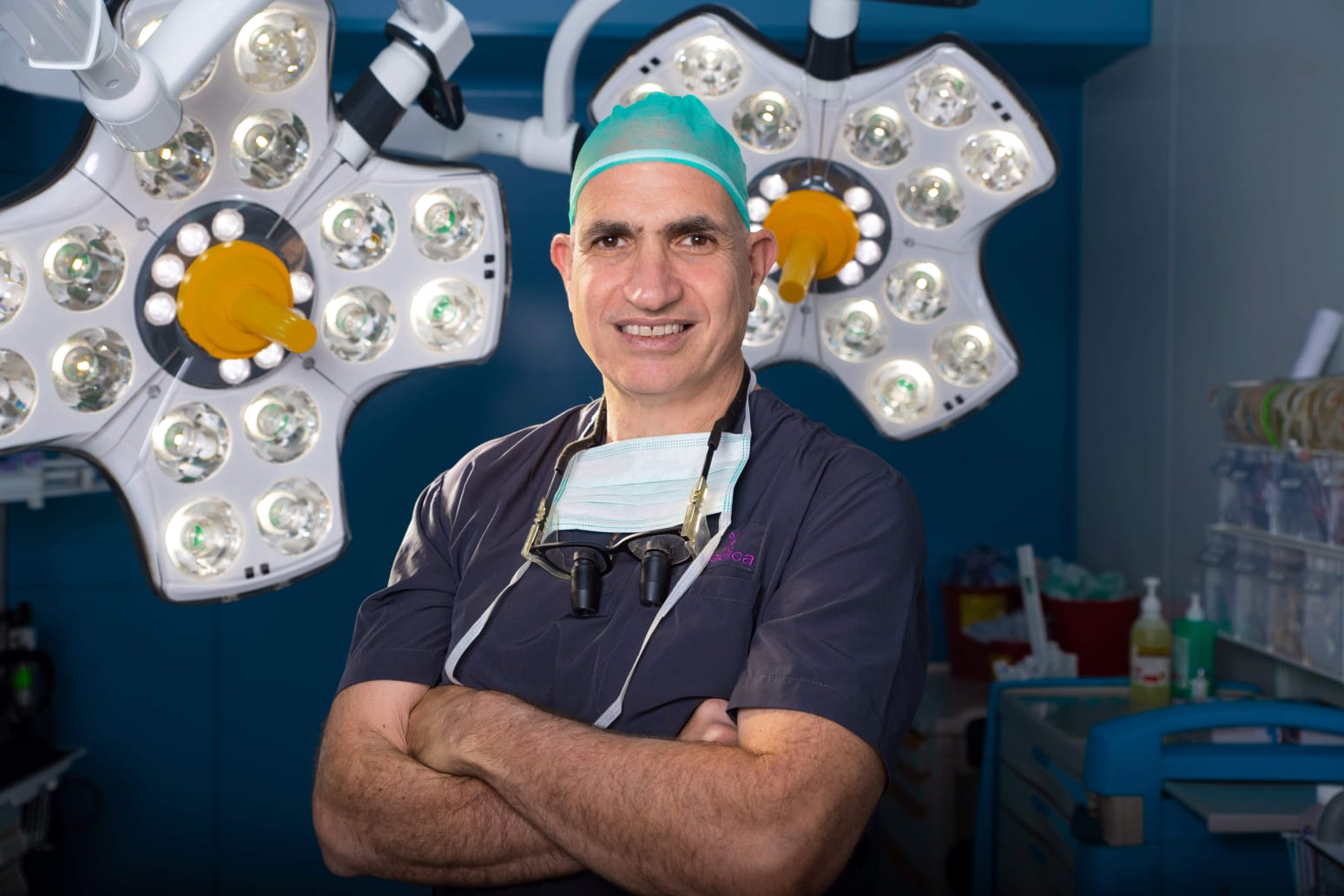Ever used the words “semen” and “sperm” like they mean the same thing? You’re not alone—but there is a difference, and it’s more important than you might think. So, what’s the difference between semen and sperm?
In short, sperm are the little swimmers, and semen is the fluid that carries them. Think of sperm as the passengers and semen as the car. Both are key players in male fertility, but they each have their own role. In this article, we’ll break it down in simple terms, clear up the confusion, and help you understand how it all works.
Defining Semen and Sperm
Composition of Semen
Semen is a complex fluid that plays a vital role in reproduction. It is primarily composed of seminal fluid, which is produced by various glands, including the seminal vesicles, prostate gland, and bulbourethral glands. This fluid contains nutrients, enzymes, and other substances that support and protect sperm cells during their journey through the female reproductive tract.
- Seminal fluid: Provides a medium for sperm transport.
- Nutrients: Fructose and other sugars provide energy for sperm.
- Enzymes: Facilitate sperm motility and penetration of the egg.
Characteristics of Sperm Cells
Sperm cells, or spermatozoa, are the male reproductive cells responsible for fertilizing the female egg. Each sperm cell consists of a head, midpiece, and tail. The head contains genetic material, while the midpiece is packed with mitochondria that provide energy for movement. The tail, or flagellum, propels the sperm forward.
- Head: Contains DNA and enzymes for egg penetration.
- Midpiece: Packed with mitochondria for energy.
- Tail: Enables motility through a whip-like motion.
Semen Production and Function
Where Semen is Formed
Semen is produced in the male reproductive system, primarily in the testes and accessory glands. The testes produce sperm cells, while the seminal vesicles, prostate gland, and bulbourethral glands contribute fluids that form semen. This process ensures that sperm are delivered in a protective and nourishing medium.
- Testes: Produce sperm cells.
- Seminal vesicles: Contribute fructose-rich fluid.
- Prostate gland: Adds enzymes and proteins.
Purpose of Seminal Fluid
The seminal fluid serves several purposes in reproduction. It provides a medium for sperm transport, protects sperm from the acidic environment of the female reproductive tract, and contains nutrients that sustain sperm during their journey. Additionally, it contains enzymes that help sperm penetrate the egg.
- Transport medium: Facilitates sperm movement.
- Protective role: Shields sperm from acidity.
- Nutrient supply: Sustains sperm energy needs.
Sperm Development and Lifecycle
Spermatogenesis Process
Spermatogenesis is the process by which sperm cells are produced in the testes. It involves several stages, starting with the division of germ cells and ending with the formation of mature spermatozoa. This process takes approximately 64 days and is continuous throughout a male’s reproductive life.
- Germ cell division: Initiates sperm production.
- Maturation: Sperm develop motility and functionality.
- Duration: Takes about 64 days to complete.
Sperm Lifespan and Motility
Sperm cells have a limited lifespan and are highly motile. Once ejaculated, they can survive in the female reproductive tract for up to five days, depending on environmental conditions. Their motility is crucial for reaching and fertilizing the egg.
- Lifespan: Up to five days in the female tract.
- Motility: Essential for egg fertilization.
- Environmental factors: Influence survival duration.
Ejaculation and Sperm Count
Average Semen Volume
The average volume of semen produced during ejaculation ranges from 1.5 to 5 milliliters. This volume can vary based on factors such as age, frequency of ejaculation, and overall health. Adequate semen volume is important for effective sperm transport.
- Typical range: 1.5 to 5 milliliters.
- Influencing factors: Age, health, and frequency.
- Importance: Ensures sufficient sperm delivery.
Typical Sperm Concentration
Sperm concentration refers to the number of sperm cells present in a given volume of semen. A healthy sperm concentration is typically between 15 million to over 200 million sperm per milliliter. This concentration is crucial for successful fertilization.
- Healthy range: 15 million to 200 million per milliliter.
- Fertility implications: Higher concentration increases chances.
- Assessment: Part of routine fertility evaluations.
Factors Affecting Semen and Sperm Quality
Age-Related Changes
As men age, changes in semen and sperm quality can occur. These changes may include reduced sperm motility, lower sperm concentration, and alterations in semen volume. Age-related factors can impact fertility and reproductive success.
- Reduced motility: Decreases with age.
- Lower concentration: Affects fertility potential.
- Volume changes: May decrease over time.
Lifestyle Influences
Lifestyle factors such as diet, exercise, and substance use can significantly impact semen and sperm quality. A healthy lifestyle, including a balanced diet and regular exercise, can enhance reproductive health, while smoking and excessive alcohol consumption can have detrimental effects.
- Diet and exercise: Improve reproductive health.
- Smoking and alcohol: Negatively affect quality.
- Stress management: Supports overall fertility.
Pre-Ejaculate vs. Semen
Composition Differences
Pre-ejaculate, or pre-cum, is a fluid released before ejaculation. It is produced by the bulbourethral glands and serves to lubricate the urethra. Unlike semen, pre-ejaculate typically contains little to no sperm, although traces may be present.
- Lubrication: The Primary function of pre-ejaculate.
- Sperm presence: Typically minimal or absent.
- Source: Produced by bulbourethral glands.
Presence of Sperm in Pre-Ejaculate
While pre-ejaculate is not primarily intended to carry sperm, it can contain small amounts of sperm from previous ejaculations. This is why it is possible, though less likely, for pregnancy to occur from pre-ejaculate.
- Sperm traces: Possible from prior ejaculations.
- Pregnancy risk: Lower than with full ejaculation.
- Precaution: Considered in contraceptive practices.
Fertility and Reproductive Health
Semen Analysis for Fertility Assessment
Semen analysis is a common test used to evaluate male fertility. It assesses various parameters, including sperm concentration, motility, and morphology. This analysis helps identify potential fertility issues and guides treatment options.
- Parameters: Concentration, motility, morphology.
- Diagnostic tool: Identifies fertility challenges.
- Treatment guidance: Informs reproductive strategies.
Sperm Morphology and Motility
Sperm morphology refers to the shape and structure of sperm cells, while motility describes their movement. Both factors are critical for successful fertilization. Abnormal morphology or reduced motility can hinder the ability of sperm to reach and fertilize the egg.
- Morphology: Shape and structure of sperm.
- Motility: Movement capability.
- Fertility impact: Essential for egg penetration.
Final Thoughts
Understanding the difference between semen and sperm is essential for grasping male reproductive health. While semen provides the medium and nutrients for sperm, sperm cells are the key players in fertilization.
Factors such as age, lifestyle, and health can influence the quality of both semen and sperm, impacting fertility. By maintaining a healthy lifestyle and seeking medical advice when necessary, individuals can support their reproductive health and increase their chances of successful conception.
FAQs
What is the main difference between semen and sperm?
The main difference between semen and sperm is that semen is the fluid that carries sperm cells. Semen provides the necessary environment and nutrients for sperm to survive and reach the egg. Sperm, on the other hand, are the individual cells responsible for fertilizing the egg.
Can you see individual sperm in semen?
Individual sperm cells are microscopic and cannot be seen with the naked eye. They require a microscope for observation due to their small size. Semen, however, is visible as a whitish fluid.
How long does sperm survive outside the body?
Sperm can survive outside the body for a short period, typically a few minutes to an hour, depending on environmental conditions. Factors such as temperature and humidity can affect their survival. In a conducive environment, such as within the female reproductive tract, they can survive longer.
Does semen contain anything other than sperm?
Yes, semen contains more than just sperm. It includes seminal fluid, which is rich in nutrients, enzymes, and proteins that support sperm function. This fluid is produced by various glands in the male reproductive system.


